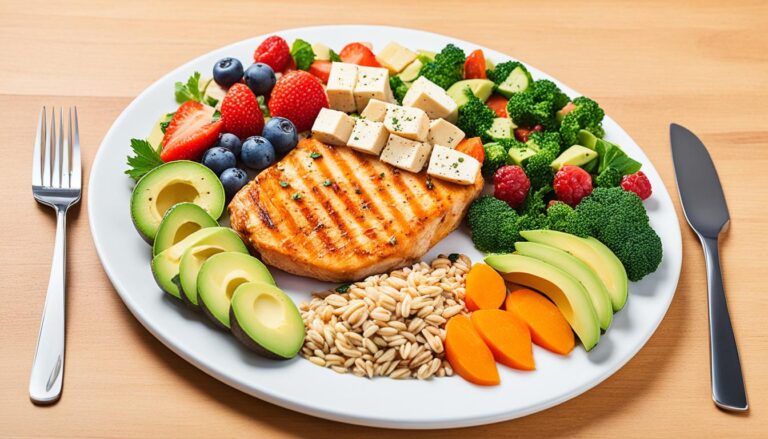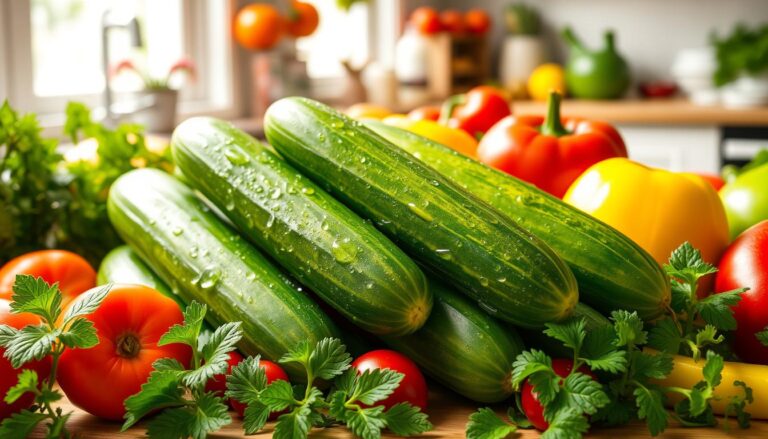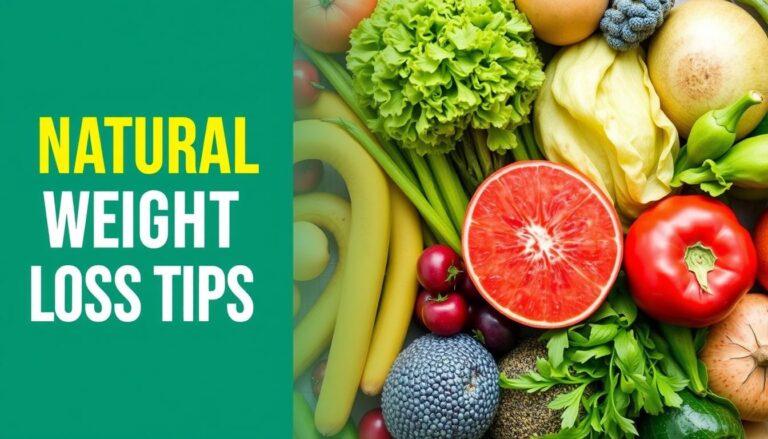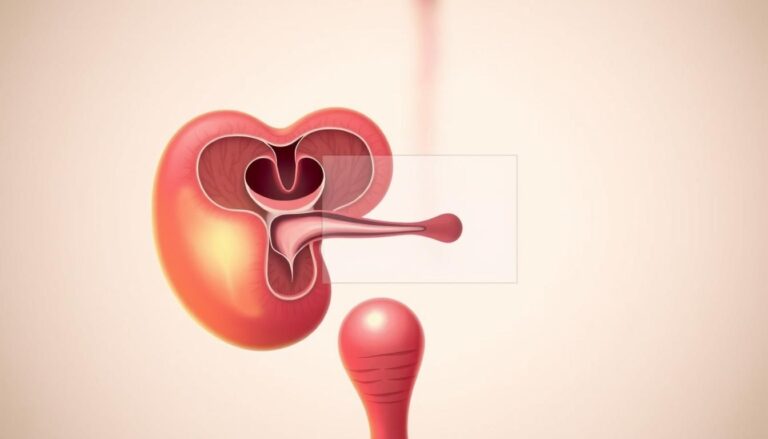What if you could achieve lasting results without starving yourself or cutting out your favorite foods? Traditional diets often fail because they create a cycle of restriction and cravings. The truth is, sustainable weight loss comes from smarter food choices not deprivation.
Research from Johns Hopkins reveals that focusing on metabolic health not just calorie counting leads to better outcomes. A balanced approach, like the 80/20 rule, allows flexibility while keeping your body and health on track. This article explores science-backed methods to help you reach your goals the right way.
Key Takeaways
- Restrictive diets often backfire due to psychological triggers.
- Hormonal balance plays a key role in effective weight management.
- The 80/20 rule promotes consistency without strict limitations.
- Gradual progress leads to more sustainable results.
- Focus on nourishment, not elimination, for long-term success.
1. The Science Behind Weight Loss Without Deprivation
Many people struggle with traditional diets because they rely on extreme restrictions. These approaches often lead to frustration and rebound weight gain. Science shows that lasting success comes from understanding your body and making gradual changes.
Why Traditional Diets Fail
Most diets focus on cutting calories drastically. This triggers a survival response in your metabolism. Your body slows down energy burning to conserve resources.
A 2022 study found that intermittent fasting works as well as calorie counting. Yet both methods can backfire if not done properly. The key is balance, not elimination.
How Sustainable Habits Lead to Long-Term Results
Small daily changes create lasting impact. Focus on nutrient-rich foods instead of counting every calorie. Add more physical activity through simple steps like walking.
Johns Hopkins research shows low-carb eating boosts fat loss by 44%. But the best way varies by person. Listen to your body and find what works for your health.
- Metabolism adapts to extreme dieting, making weight loss harder over time
- Sleep quality affects hunger hormones and fat storage
- Stress increases belly fat through cortisol production
- Muscle preservation keeps metabolism active
2. Hydration: Your First Weight Loss Tool
Staying hydrated might be the simplest yet most overlooked strategy for effective weight management. A 2010 study found that drinking water before meals increased weight loss by 44%. This easy habit supports metabolism and helps your body function optimally.
How Water Curbs Cravings
Many people mistake thirst for hunger. When your body needs water, it can send signals similar to food cravings. Drinking a glass when hungry may help you distinguish real hunger from dehydration.
Water also aids lipolysis the process of breaking down fat. Proper hydration keeps this metabolic function running smoothly. Herbal teas count toward your daily intake and add flavor variety.
Best Times to Drink for Maximum Effect
Timing matters as much as quantity. Follow these evidence-based guidelines:
- 16 oz upon waking to kickstart metabolism
- 8 oz 30 minutes before each meal to reduce calorie intake
- During and after exercise to replenish fluids
- When feeling fatigued or headachy common dehydration signs
| Body Weight | Daily Water Needs |
|---|---|
| 120-150 lbs | 60-75 oz |
| 151-180 lbs | 75-90 oz |
| 181-210 lbs | 90-105 oz |
Monitor your hydrationlevels through urine color pale yellow indicates proper balance. Electrolytes become especially important if you follow a low-carb eating plan.
This simple way to support your goals requires no special equipment or restrictive rules. Just keep a water bottle handy throughout the day.
3. Mindful Eating Techniques That Work
Mindful eating transforms your relationship with food by focusing on awareness rather than restriction. A 2018 study in Obesity Reviews found participants practicing mindfulness reduced BMI by 4.3% on average. This approach helps you tune into your body’s signals, making eating intentional instead of automatic.
The 20-Minute Rule for Satiety
Your brain needs 20 minutes to register fullness. Eating too fast often leads to consuming extra calories. Try these strategies:
- Chew each bite 15–20 times to slow pace
- Place utensils down between bites
- Set a timer for 25-minute meal minimums
Eliminating Distractions During Meals
Eating while watching TV or scrolling increases mindless consumption. Design a distraction-free zone:
| Environment Tip | Benefit |
|---|---|
| Turn off screens | Reduces overeating by 14% |
| Use smaller blue plates | Portions appear larger visually |
| Journal sensory details | Enhances meal satisfaction |
Identify emotional triggers like stress or boredom that drive cravings for sugar. Practicing gratitude before meals fosters a healthier mindset. These small shifts make a big difference over time.
4. Prioritize Protein to Stay Full Longer
Boosting protein intake can help control hunger and preserve lean muscle mass. Unlike carbs or fats, protein requires more energy to digest, keeping your metabolism active. Studies show it also reduces cravings by stabilizing blood sugar.

Read more: Egg Protein g per 100g What You Need to Know
Optimal Protein Intake for Weight Loss
A 2020 review recommends 1.2–2 grams of protein per kilogram of body weight daily. For a 150-pound person, that’s 82–136 grams. Use this formula to calculate your needs:
- Body weight lbs÷ 2.2 = weight in kg
- Multiply by 1.2 sedentary or 2 active
Complete proteins animal-based contain all essential amino acids. Plant proteins like beans or quinoa often need combining pair rice with lentils for a complete profile.
10 High-Protein Foods to Include Daily
Incorporate these nutrient-dense options into meals:
- Greek yogurt 17g per 6 oz
- Tempeh 20g per ½ cup
- Sardines 22g per 3.75 oz can
- Chicken breast 26g per 3 oz
- Lentils 18g per cooked cup
For plant-based diets, blend pea protein with chia seeds or enjoy hummus with whole-grain pita. Spread intake evenly aim for 30g per meal to maximize muscle synthesis.
Tip: If digestion is a concern, try fermented options like kefir or opt for lean cuts. Animal proteins have higher bioavailability, but plant sources offer fiber and antioxidants.
5. Smart Carbohydrate Choices
Not all carbohydrates are created equal some fuel your body while others spike blood sugar. A 2023 study in Nutrition Journal found participants eating refined grains gained 3x more belly fat than those choosing whole foods. The key lies in understanding glycemic impact and fiber content.
Whole Grains vs. Refined Grains
Whole grains retain all three parts of the kernel bran, germ, and endosperm. This preserves fiber and nutrients that regulate blood sugar levels. Refined grains strip these components, leaving mostly starch.
Try these easy swaps:
- White rice Brown or wild rice 3g more fiber per cup
- Regular pasta Whole wheat or lentil pasta 5g protein boost
- White bread Sprouted grain bread lower glycemic index
Resistant starch in cooled potatoes and green bananas feeds gut bacteria, creating compounds that support metabolic health.
The Fiber Connection to Fullness
Soluble fiber forms a gel that slows digestion, while insoluble fiber adds bulk. Both types work together to keep you satisfied longer. Aim for 25-38g daily from varied sources.
| Fiber Type | Best Sources | Benefits |
|---|---|---|
| Soluble | Oats, apples, beans | Lowers cholesterol |
| Insoluble | Whole wheat, nuts, veggies | Supports regularity |
| Resistant Starch | Cooled potatoes, green bananas | Feeds gut bacteria |
Pair carbs with protein or healthy fats at every meal. This balanced way of eating prevents energy crashes and reduces calorie intake naturally. Your gut microbiome thrives on diverse plant foods, making smart carb choices a win-win.
6. Healthy Fats for Weight Loss
Fat often gets a bad reputation in diet culture, but it plays a crucial role in metabolic function and satiety. Research from Johns Hopkins shows certain fats help reduce abdominal fat while keeping hunger hormones balanced. Unlike empty calories, quality fats nourish your body and support long-term health.
The Science Behind Fat and Fullness
Fats influence hunger through lipid signaling. They trigger the release of hormones like leptin, which tells your brain you’re full. Essential fatty acids especially omega-3s boost metabolism by up to 400 calories daily, according to a 2021 study.
Key fat types and their effects:
- MUFAs avocados, olive oil : Reduce belly fat storage
- PUFAs salmon, walnuts : Lower inflammation
- SFAs coconut oil, grass-fed butter : Support hormone production
Replacing just 5% of saturated fat intake with polyunsaturated fats decreases diabetes risk by 25%.
Top 10 Fat Sources for Balanced Nutrition
Incorporate these foods into your meals for optimal results:
- Wild-caught salmon rich in EPA/DHA
- Chia seeds high fiber + omega-3
- Extra virgin olive oil polyphenol benefits
- Almonds vitamin E owerhouse
- Pasture-raised eggs choline for liver health
| Fat Type | Daily Goal | Best Time to Consume |
|---|---|---|
| Omega-3 | 1.1-1.6g | With breakfast or lunch |
| MUFAs | 20-35% of calories | Throughout the day |
| MCTs | 1-2 tbsp | Pre-workout or morning |
For snacks, try celery with almond butter or full-fat Greek yogurt with flaxseeds. These combinations provide protein and fiber to stabilize blood sugar levels. Remember fat isn’t the enemy when chosen wisely.
Pro tip: Pair fat-soluble vitamins A,D,E,K with healthy fats for better absorption. A spinach salad with olive oil dressing maximizes nutrient uptake.
7. Intermittent Fasting Made Simple
Intermittent fasting IF offers a flexible approach to managing calories without strict diet rules. Unlike traditional methods, it focuses on time-restricted eating windows. A 2022 meta-analysis found IF helps reduce body fat while preserving muscle mass.
The 16:8 Method Explained
This popular approach involves fasting for 16 hours and eating within an 8-hour window. Most people skip breakfast and eat between noon-8pm. Benefits include:
- Improved insulin sensitivity
- Enhanced fat burning during fasting hours
- Simplified meal planning
Start gradually by delaying breakfast by 30 minutes daily. Stay hydrated with water, black coffee, or herbal tea during fasting periods.
5:2 Diet for Beginners
This method involves eating normally for 5 days and restricting calories to 500-600 on 2 non-consecutive days. It’s easier for those who prefer occasional restrictions.
| Method | Fasting Hours | Best For |
|---|---|---|
| 16:8 | 16 daily | Consistency seekers |
| 5:2 | 24 2x/week | Flexibility lovers |
| Eat-Stop-Eat | 24 1-2x/week | Advanced fasters |
For optimal health, pair fasting with nutrient-dense meals. Focus on proteins, healthy fats, and fiber during eating windows. Monitor energy levels and adjust as needed.
Tip: Break your fast with light proteins like eggs or Greek yogurt. This helps stabilize blood sugar and prevents overeating.
8. Move More Without the Gym
Your body burns calories even when you’re not formally exercising. This concept, called NEAT Non-Exercise Activity Thermogenesis , accounts for 15-50% of daily energy expenditure. Simple actions like fidgeting or standing boost metabolism without dedicated workout time.

Read more: Yoga vs Gym Which Workout is Better for You?
NEAT Non-Exercise Activity Thermogenesis
The CDC recommends 150 minutes of moderate physical activity weekly. NEAT helps achieve this through daily movement. Office workers can burn 350 extra calories daily by:
- Taking 5-minute walking breaks hourly
- Using a standing desk for 30-minute intervals
- Doing calf raises while brushing teeth
Simple Ways to Add Movement to Your Day
Transform routine tasks into calorie-burning opportunities. Try these evidence-based strategies:
| Activity | Calories Burned 30 min |
|---|---|
| Walking meetings | 120-150 |
| Commercial break squats | 50-80 |
| Gardening | 135-165 |
Wearable tech like step trackers can gamify physical activity. Set incremental goals start with 500 extra steps daily, increasing by 10% weekly. Household chores count too vacuuming burns 90 calories in 20 minutes.
Sedentary adults who added NEAT activities lost 3.5 pounds in 8 weeks without dietary changes.
Schedule movement snacks throughout your day. Stretch during phone calls or pace when thinking. These small changes create sustainable habits for long-term health benefits.
9. Strength Training for Metabolic Boost
Building lean muscle does more than shape your body it supercharges your metabolism. Unlike cardio alone, strength training creates an afterburn effect that keeps burning calories long after your workout ends. This makes it a powerful tool for sustainable results.
The Science Behind Muscle and Metabolism
Every pound of muscle burns about 6-10 calories daily at rest, while fat burns just 2-3. This difference adds up over time. Strength training also triggers EPOC Excess Post-Exercise Oxygen Consumption , elevating calorie burn for up to 38 hours post-workout.
Key benefits of resistance exercise:
- Boosts resting metabolic rate by 7-10%
- Preserves lean mass during weight loss
- Improves insulin sensitivity better than cardio alone
Effective Bodyweight Exercises to Start
You don’t need a gym to begin strength training. These moves target major muscle groups using just your body weight:
| Exercise | Muscles Worked | Beginner Reps |
|---|---|---|
| Push-ups knees or wall | Chest, shoulders, triceps | 8-12 |
| Bodyweight squats | Quads, glutes, hamstrings | 10-15 |
| Plank | Core, shoulders | 20-30 sec |
For progression, try these variations:
- Add 2 reps weekly to bodyweight moves
- Increase hold times by 5 seconds
- Slow your tempo 3 sec down, 1 sec up
Just two weekly strength sessions maintain muscle mass, while three or more build new lean tissue in most adults.
Pair strength training with protein-rich meals to support recovery. Aim for 20-30g of protein within 2 hours post-workout. This way, you maximize the metabolic benefits of your physical activity.
Start with 20-minute sessions 2-3 times per day. Focus on form before increasing intensity. Over time, these small investments yield big returns for your metabolism and overall health.
10. Sleep’s Role in Weight Management
Quality sleep may be the missing link in your weight management journey. A 2022 review confirms sleep deprivation alters metabolic levels and increases cravings by 45%. Your body uses this crucial time to regulate hormones that control hunger and fat storage.
The Leptin-Ghrelin Connection
These two hormones work like a seesaw in your body. Leptin signals fullness, while ghrelin stimulates appetite. Poor sleep reduces leptin by 18% and increases ghrelin by 28%, according to sleep studies.
Optimize your circadian rhythm with these science-backed methods:
- Expose yourself to morning sunlight within 30 minutes of waking
- Limit blue light exposure 2 hours before bed
- Maintain consistent sleep-wake times even weekends
Optimal Sleep Duration for Fat Loss
Adults need 7-9 hours nightly for metabolic health. The sweet spot for weight management is 7.5 hours, as shown in clinical trials. Create an ideal sleep environment:
| Factor | Optimal Range |
|---|---|
| Room temperature | 60-67°F |
| Humidity | 30-50% |
| Noise | Below 30 decibels |
Manage stress and cortisol levels with these nighttime rituals:
- 4-7-8 breathing technique inhale 4 sec, hold 7, exhale 8
- Progressive muscle relaxation starting from toes
- Gratitude journaling to calm the mind
Just one night of poor sleep decreases insulin sensitivity as much as six months on a high-fat diet.
Track your sleep quality using wearable tech or simple journaling. Note bedtime, wake time, and energy levels each day. Small improvements create compounding benefits for your metabolism over time.
11. Stress Reduction Strategies
Chronic stress silently sabotages weight management efforts through hormonal disruptions. A 2022 review confirms high stress levels increase abdominal fat storage by 32% compared to low-stress groups. Managing tension becomes as crucial as diet for sustainable results.
The Cortisol-Belly Fat Connection
Your adrenal glands release cortisol during stressful situations. This hormone triggers fat storage around organs for emergency energy. Over time, chronic elevation leads to insulin resistance and increased appetite.
The HPA axis hypothalamic-pituitary-adrenal governs this response. When overworked, it causes:
- 17% higher calorie intake during stressful periods
- Reduced fat oxidation by 22%
- Increased cravings for high-sugar foods
Just one hour of acute stress raises cortisol enough to inhibit fat loss for three days post-event.
5-Minute Stress Relief Methods
These science-backed techniques fit into busy schedules while lowering cortisol:
| Technique | How To | Effectiveness |
|---|---|---|
| Box Breathing | Inhale 4s, hold 4s, exhale 4s, hold 4s | Reduces cortisol by 27% |
| Cold Exposure | 30s cold water face immersion | Activates vagus nerve |
| Gratitude Journaling | List 3 positive daily experiences | Lowers stress hormones |
For workplace stress, try these micro-practices:
- Desk stretches every 90 minutes
- Nature sounds during breaks
- Progressive muscle relaxation tense/release
Track improvements using heart rate variability apps. Higher variability indicates better physical activity recovery and health resilience. Small daily habits create compounding benefits for your body and mind.
12. Gut Health and Weight Loss
Emerging research reveals gut bacteria influence weight management more than previously thought. Your microbiome produces compounds that regulate metabolism, inflammation, and even food cravings. A 2022 study in Cell Host & Microbe found specific bacterial strains can increase calorie absorption by 15%.
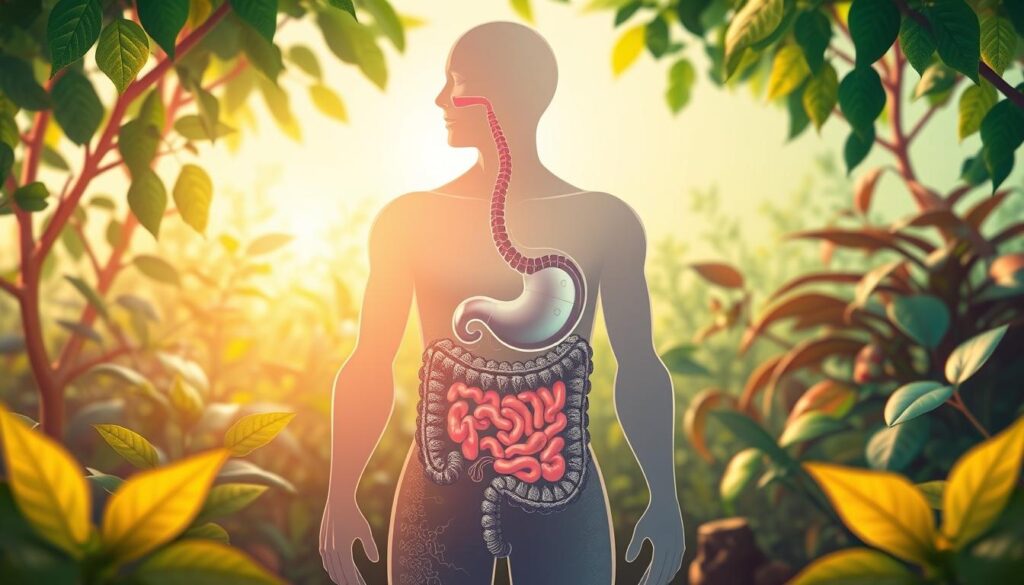
Read more: Gut Healthy and Sustainable Eating Guide
Powerful Probiotic Foods
Fermented foods introduce beneficial bacteria to your digestive system. Incorporate these options weekly:
Kefir contains 30+ strains
- Sauerkraut choose refrigerated, unpasteurized
- Kimchi rich in lactobacillus
- Miso paste great for soups
- Kombucha pair with meals
Participants consuming daily probiotics lost 50% more belly fat than the control group over 12 weeks.
Essential Prebiotic Fibers
These indigestible fibers feed your good gut bacteria. Top sources include:
| Prebiotic | Serving Size | Benefits |
|---|---|---|
| Chicory root | 1 tbsp | 71% fiber content |
| Dandelion greens | 1 cup | Supports liver detox |
| Garlic | 3 cloves | Boosts immunity |
Increase fiber gradually to avoid bloating. Start with 5g daily from new sources, adding 2g weekly. Track digestive responses like energy levels and regularity.
For antibiotic recovery, bone broth provides collagen to repair gut lining. Its amino acids support microbial balance naturally. Combine with probiotic foods for optimal gut health restoration.
13. Portion Control Without Counting
Your hands provide the perfect tool for balanced meals without calorie counting. Johns Hopkins research shows visual estimation methods work as well as precise measuring for weight loss. This way of eating keeps your body nourished while avoiding restrictive diet mentalities.
Hand Measurement System
Use these simple palm-based measurements for perfect portion control anywhere:
- Protein = palm size 20-30g
- Carbs = cupped hand ½-1 cup
- Fats = thumb length 1 tbsp
- Veggies = two fistfuls 2+ cups
This method automatically adjusts for your body size. Larger individuals naturally have bigger hands, requiring slightly more food.
Participants using hand measurements maintained 12% greater weight loss at 18 months compared to calorie counters.
The Perfect Plate Formula
Divide your plate visually for balanced meals that satisfy:
| Plate Section | Food Type | Visual Cue |
|---|---|---|
| ½ plate | Non-starchy veggies | Bright colors |
| ¼ plate | Lean protein | Deck of cards size |
| ¼ plate | Whole grains/starchy veg | Tennis ball size |
For snacks, use the two-finger rule servings should fit between your index and middle fingers when pinched. This works well for nuts, dried fruit, or chocolate.
At restaurants, immediately box half your meal. Use salad plates at home they make normal portions appear larger. These small shifts create big calories savings over time without feeling deprived.
14. The 80/20 Rule for Sustainable Eating
Sustainable eating doesn’t require perfection just smart balance. The 80/20 rule lets you enjoy favorite foods while making progress. Research shows this flexible approach leads to better long-term results than strict diet plans.
Finding Your Nutritional Balance
This method means eating nutrient-dense food choices 80% of the time, with 20% for enjoyment. Think of it like this:
- Monday-Friday: Focus on whole foods, lean proteins, and vegetables
- Weekends: Include planned treats without guilt
- Each meal: Fill most of your plate with nourishing options
A 2021 study found people using this way of eating maintained results 3x longer than strict dieters. The key is making your 80% count with quality ingredients.
Implementing Without Guilt or Stress
Try these practical strategies for success:
| Strategy | How It Helps | Example |
|---|---|---|
| Weekly treat allowance | Prevents overindulgence | 3 small desserts/week |
| Crowding out | Reduces junk food naturally | Add veggies before treats |
| Restaurant matrix | Maintains balance when dining out | Appetizer or dessert, not both |
Track non-scale victories like energy levels and clothing fit. Celebrate when your favorite jeans feel looser, not just when the number drops.
Flexible dieting leads to 23% better adherence than restrictive approaches, according to a 2022 JAMA study.
The 80/20 rule isn’t about counting every calorie. It’s about creating a sustainable health pattern that fits your life. Start small try one balanced day at a time.
15. Secrets of Losing Weight Without Deprivation
The real breakthrough in weight management comes from understanding your cravings, not fighting them. A 2018 mindfulness study showed participants reduced emotional eating by 40% using psychological techniques. This approach creates sustainable change by addressing root causes.
Rewiring Your Response to Cravings
Urge surfing observing cravings without acting helps break automatic eating patterns. Try these neuroscience-backed methods:
- Delay tactics: Wait 15 minutes before indulging cravings often pass
- Flavor pairing: Combine savory and sweet to satisfy taste buds faster
- Environment audits: Keep trigger foods out of sight
Research shows meditation changes brain responses to food cues. Just 10 minutes daily reduces impulsive eating by 31%. The key is creating space between craving and action.
Developing a Nourishing Food Relationship
Replace diet mentality with self-compassion using these strategies:
| Practice | Benefit |
|---|---|
| Positive nutrition framing | Focus on adding nourishing foods vs. restricting |
| Non-food rewards | Celebrate progress with experiences, not treats |
| Mindful shopping | Make 80% of cart whole foods automatically |
Participants practicing self-compassion ate 30% fewer calories during stress periods while maintaining satisfaction.
Build new habit loops by pairing routines: Drink herbal tea while journaling instead of nighttime snacking. Over time, these small shifts rewire your body’s responses naturally.
16. Conclusion: Your Path Forward
Sustainable progress begins with small, consistent changes rather than drastic measures. Combine the strategies from this guide hydration, protein focus, and mindful movement to create lasting weight loss results.
Start with this checklist:
- Track non-scale victories like energy levels
- Add 10 minutes of physical activity daily
- Use the 80/20 rule for balanced eating
Plateaus are normal. When progress slows, revisit your sleep and stress management habits. These often impact body composition more than diet alone.
Join online communities or partner with a friend for accountability. Celebrate every step toward better health whether it’s looser clothes or climbing stairs easier.
Your journey starts today. Pick one strategy to implement this week, then build from there. Sustainable change happens gradually, not overnight.

